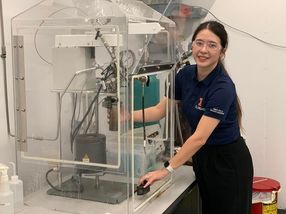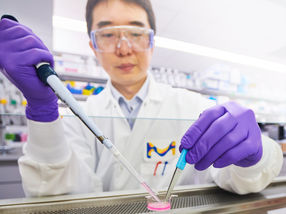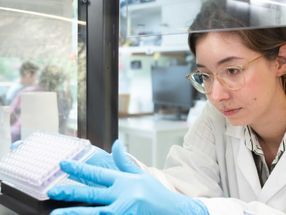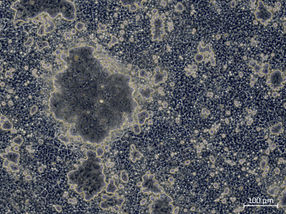A new way to produce clean hydrogen fuel from water using sunlight
Advertisement
hydrogen is the most abundant element in the universe, and is considered by many to be a potential clean fuel of the future. Water and fossil fuels contain large amounts of hydrogen, but unlocking molecular dihydrogen fuel from these sources takes a great deal of energy, casting doubt over any future hydrogen economy. Turning water into hydrogen using solar energy could lead the way to cheap and clean hydrogen fuel. However, this process currently relies on photocatalysts containing expensive precious metals, limiting its capacity.
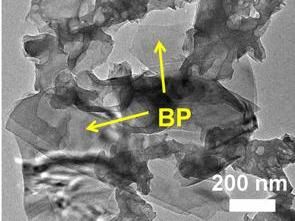
Transmittance electron microscopic image of the composite photocatalyst with two components, black phosphorous (BP) and graphitic carbon nitride (g-C3N4).
Osaka University
Now, researchers centered at Osaka University have developed a new kind of photocatalyst for producing hydrogen from water, which is not only free of expensive metals but also absorbs a wider range of sunlight than ever before.
"We were pleased to find a good amount of hydrogen produced from water using our new composite photocatalyst with graphitic carbon nitride and black phosphorous," lead author Tetsuro Majima says. "But what we didn't expect to find was that even when using low-energy light, in the near infrared, the photocatalyst continued to produce hydrogen."
Like graphite, graphitic carbon nitride forms in large sheets, but carbon nitride sheets also have holes that can interact with hydrogen molecules. In the past, photocatalysts based on carbon nitride have needed help from precious metals to produce hydrogen from water. The researchers found the metal could be replaced by a kind of phosphorus, which is a widely abundant and inexpensive element.
They showed that their photocatalyst was effective for producing hydrogen from water using energy from different kinds of light. Most unusually, even near infrared light with low energy could drive the hydrogen production.
Studies of the working photocatalyst in the picosecond time scale revealed that strong interactions between the carbon nitride and black phosphorous in the composite promoted hydrogen production. When the two materials were tested separately, energy from the sunlight was rapidly dissipated and little or no hydrogen was produced.
Lead author Tetsuro Majima says, "The hydrogen economy faces a great many challenges, but our work demonstrates the potential for efficiently and cheaply producing hydrogen from water with a photocatalyst based on widely abundant elements. This is an important step toward making other hydrogen-based technologies economically and environmentally viable."



































